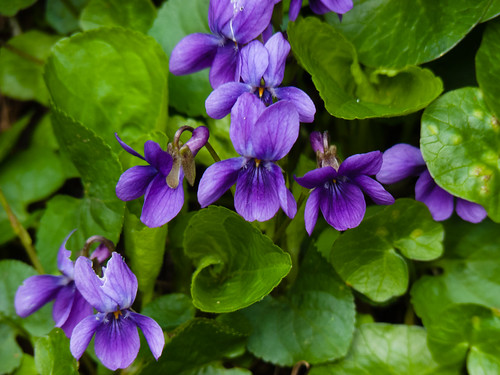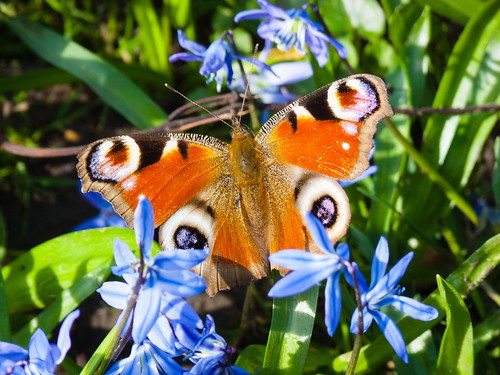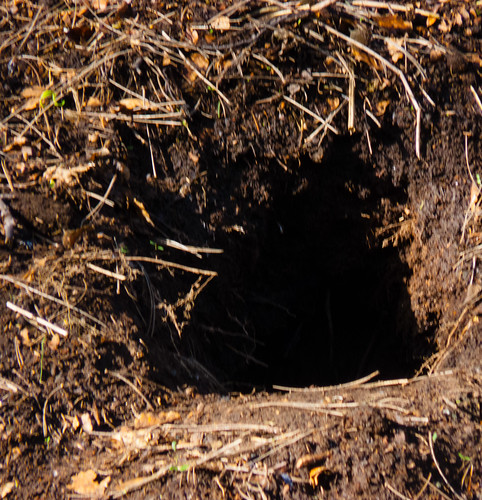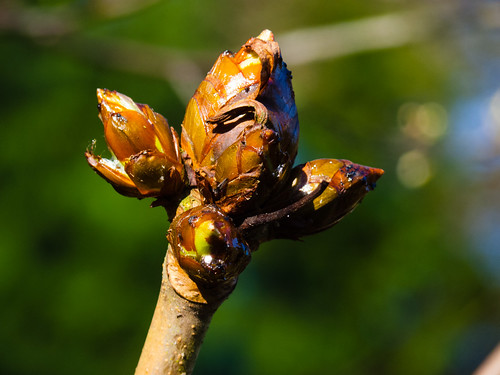The buds of this hawthorn bush were just about to burst when this picture was taken. There are two different types of lichen (yellowish and greenish-grey) growing on the twig.
Marsh marigolds
Butterburr
Glistening inkcap
Every spring these violets flower at a sheltered spot by the Staffs & Worcs canal.
The same little bank normally has violets and lesser celandines flowering at the same time, with the purple and yellow of the two sets of blooms making a colourful contrast.
The violets below were growing by a roadside. They look much more blue in colour.
More mosses
Peacock butterfly
Badger sett
One of the entrances to a badger’s set. This one has at least half a dozen entrances: some setts can have many more.
A fox’s den is also excavated, but has a narrower hole.
CORRECTION – while this post was waiting to be scheduled, someone saw the inhabitants of the hole at dusk. They were a fox, a vixen and at least five very young cubs – perhaps four weeks old as their fur was starting to change to reddish brown.
















